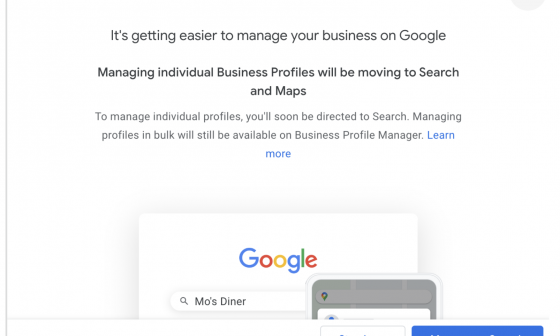We’re approaching the holidays, which means 2017 is almost over. You’re already ahead of the game on your SEO strategy, and you have a plan in place to increase conversions in 2018. Great! But did you take any of these trends into account?
It’s time to review your tactics and make sure you know what to look for and what to expect in your industry.
Voice Search
New technology hosts more personal experiences, especially with developing voice-to-text capability. It changes the way we communicate with our devices, making it easier and faster to process information. One out of five search queries already come from voice to text functionality according to Google.

The market expects a more significant shift toward voice search in 2018, so it’s important to focus on optimizing more long tail keywords and natural language that facilitates the conversational tone used in talking. As accuracy of voice technology and digital assistants improves, more people will make a move toward using it often.
Algorithms will keep changing and getting smarter as the method of search evolves. Keeping up with search engine requirements for ranking is critical to staying relevant and at the top of lists. Furthermore, as smart home hubs like Alexa and Google Home penetrate more and more houses, voice search will integrate even further into consumers’ lives.
Growing opportunities to connect brand and user infiltrate today’s market, making it imperative that you improve your SEO and content to take advantage of these unique and relevant statistics.
User Experience
A good user experience never goes out of style. And it’s going to be increasingly important in 2018 as the industry moves toward more voice automation. Competing with a personal assistant or voice recognition is tough. Your focus should always be on your user. If your page isn’t easy to navigate, they won’t come back.

Most search engines examine which pages are the most useful by studying how people interact and engage with the page. Pages that generate more traffic and engagement rank high and search engines favor them over others.
Monitor things like your site’s speed, readability, and menu structure to make sure they’re operating efficiently and facilitating smooth user experiences and navigation. Examining your visitors’ browsing habits offers other helpful insights about where they are coming from so you can develop more useful backlinks.
As more people consume data on their mobile devices, optimizing your mobile site or an app is critical for supporting a user experience across all platforms.
As SEO moves toward more personal experiences, maintaining your UX is crucial to increase traffic and conversions. You have to engage your audience, and an increase in traffic alone is not enough to convert or sustain engagement from a loyal audience.
Link Building

Link building has been a proven SEO method for a long time, so this should come as no surprise to you. Search engines are smart enough to recognize quality over quantity, so link building is an essential tool that you shouldn’t overlook. Acquiring links from education websites and other trusted industry experts can drastically increase your rank on any search engine and make you easier to find. I would even go so far as to say that it’s impossible to rank on Google or any other search engine without links. Here’s why:
Links are Google’s #1 ranking factor
Links define the entire internet
Links point to other great content that deserves to rank as well
Links transfer power and trust, hopefully back to you
Links help people discover your site
Blogging is a great way to start link building. Linking to relevant external sources in your blog helps to build credibility with other experts in your industry. By sharing blogs on social media sites and writing guest posts, you can build inbound links to your own website as well.
Getting started with blogging is pretty simple. Using a keyword research tool, find the top ranking keywords for your industry. Filter the keywords based on the search volume and try to see if you can get any content ideas from it. Let’s say – you choose a keyword “Local SEO Trends”.
Now form a content idea based on this keyword and start working on the content. It can be Local SEO Checklist, Local SEO tips and tricks, Local SEO trends for 2018 and so on. You can then either use this article as a guest post or publish it on your own blog. Once that’s done, see to it that you spread the word amongst your social circles by using the right channels.
Linking to other blogs on your site sometimes generates a ‘return the favor’ sort of attitude within the community, and simply linking to other people’s work can build a good linking foundation. You can also create organic inbound links by guest blogging on someone else’s site.
Researching the links your competitors use is a useful tool for knowledge building. You can learn a lot from the way your competitors link to other content. You gain valuable insight into their strategy, the keywords they are using, and what they feel is essential. Using this information, you can build better links to outrank them.
Calls to action with internal links keep people on your site and help them to discover more about you. Writing content that links back to yourself does many things. It creates a backlink, and it promotes other products or services you offer. You can use these tactics to upsell as well.
Link building also builds relationships and becomes a powerful tool in an SEO strategy. Diversify your inbound links to increase visibility. Your links don’t always have to come from the most popular sites; they just have to be meaningful.
Featured Snippets
You may have noticed these snippets rising in popularity lately. When you perform a Google search, often you’ll see a brief definition or explanation of your search term. These increase competition, making it more difficult to appear in ‘position zero’ of the search engine results page. You have to cater to a combination of factors to earn these spots, so it requires following some new SEO rules.

Image courtesy – Search Engine Land
Lists and graphs are a favorite here, and it could benefit you to develop some Q&A format pages, making it easier for Google to crawl your site for the right content to feature in a snippet.
Combining this with optimization of voice searches could provide an edge up in the coming year. Snippets are useful responses for hubs that respond in voice because it’s conversational content is easy information to grab and repeat back to the user.
Again, optimizing for long tail keywords and conversational terms become increasingly important as people communicate with their devices using voice, and those devices talk back.
Google also strives to answer searches in a more useful way using a ‘how’ or ‘what’ structure. Use this to develop content that can serve as a Quick Answer using Google’s Answer Box. Google attempts to organize these results in more appealing ways for users, adding to the complexity of optimizing for long tail keywords and conversational styles.
Put Mobile First
The next year ushers in a shift to putting mobile first. Rather than catering to mobile as an afterthought, brands need to realize that Google plans to deploy a mobile-first index. Even without a mobile-first index, the majority of web traffic comes from mobile devices and keywords rank differently on mobile than they do on a desktop computer. The best possible visibility comes from SEO marketing strategies geared toward mobile searches.

Mobile searches are based on context, and that includes location, making it a huge opportunity for brands to market locally. People on the go need fast answers, and optimizing your site for local searches on mobile generates relevance and increased chances of discovery.
A mobile-first strategy takes into account the rise of voice searches by facilitating a search experience through personalized answers. Site speed is also critical, and you should consider accelerated mobile pages that load up to four times faster. Using a mobile device automatically implies urgency, and if you can’t compete, you’ll lose the battle.
Visual Search
Visual search will take the internet by storm in the next phase of search evolution. From text to visual representations, the internet continues to become visually focused. There are great opportunities to explore the power of visual search. Bing, Pinterest, and Google already developed visual search engines to capitalize on this new trend.
Your SEO strategy should consider how people consume visual content and the enhancements in how search engines return results. As competition increases, acknowledge the potential of successful visual search techniques.
Machine Learning
Advances in artificial intelligence change the way search results rank. It facilitates searches, helping users find appropriate results. It leads to a personalized experience and can reward successful SEO strategies keeping up with trends.
Google’s learning algorithm also continues to contribute to the search landscape. As Google gets smarter, it is increasingly relevant for you to optimize for long tail keywords and conversational style as discussed above.
Traditional SEO techniques are still effective, but taking into account these trends could significantly increase your relevance on the search landscape. Analyzing search intent and developing the appropriate SEO strategy in response to that intent is difficult. These growing trends create a market shift and change requirements completely. It’s critical to keep up with optimization on all devices to stay relevant and increase brand conversion.
Check out our list of Google’s local search ranking factors if you liked this post!


